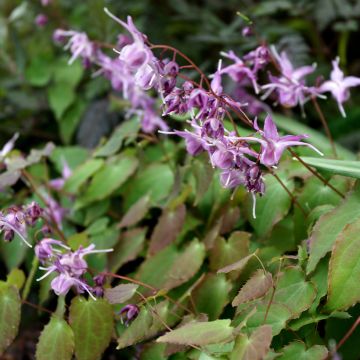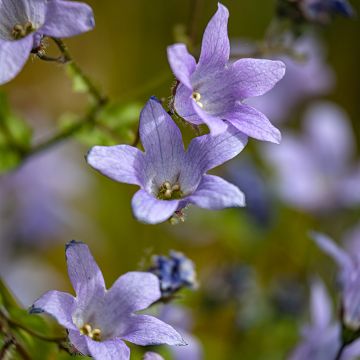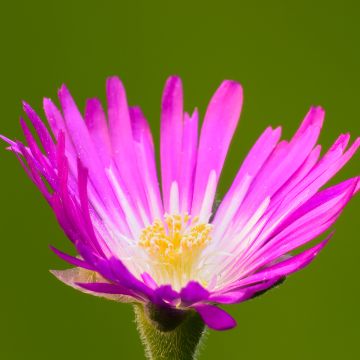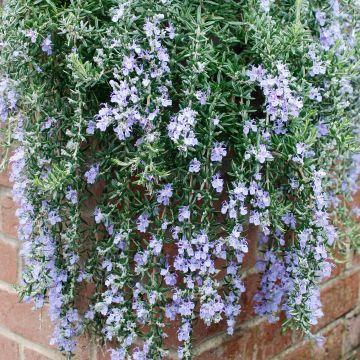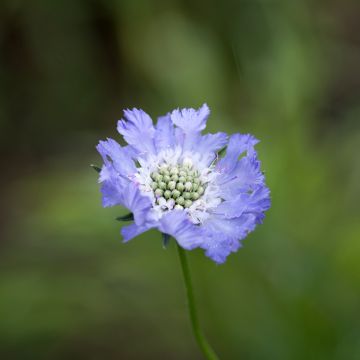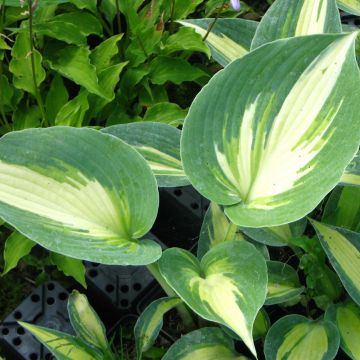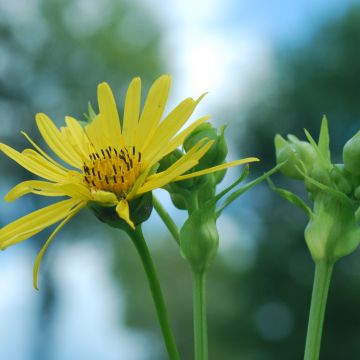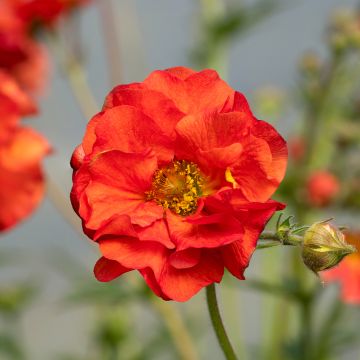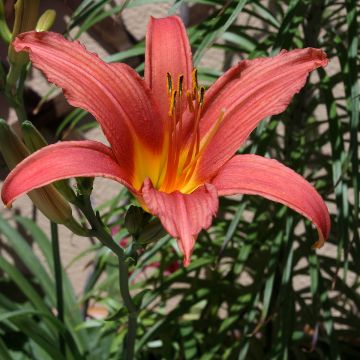Shipping country and language
Your country of residence may be:
Your country of residence is:
For a better user experience on our website, you can select:
Your shipping country:
-
Andorra
-
Austria
-
Belgium
-
Bulgaria
-
Canada
-
Chile
-
Croatia
-
Cyprus
-
Czechia
-
Denmark
-
Estonia
-
Finland
-
France
-
Germany
-
Greece
-
Hungary
-
Iceland
-
Ireland
-
Italy
-
Latvia
-
Lithuania
-
Luxembourg
-
Malta
-
Monaco
-
Netherlands
-
Poland
-
Portugal
-
Romania
-
Slovakia
-
Slovenia
-
Spain
-
Sweden
-
Switzerland
-
United Kingdom
We only deliver seed and bulb products to your country. If you add other products to your basket, they cannot be shipped.
Language:
-
French
-
German
-
Spanish
-
English
-
Italian
My Account
Hello
My wish lists
Log in / Register
Existing customer?
New customer?
Create an account to track your orders, access our customer service and, if you wish, make the most of our upcoming offers.


Dyckia Brittle Star - Broméliacée


Dyckia Brittle Star - Broméliacée
Dyckia Brittle Star
Dyckia Brittle Star
Saw-blade
Order in the next for dispatch today!
Dispatch by letter from 3,90 €.
Delivery charge from 5,90 € Oversize package delivery charge from 6,90 €.
More information
This item is not available in your country.
Shipping country:
-
Andorra
-
Austria
-
Belgium
-
Bulgaria
-
Canada
-
Chile
-
Croatia
-
Cyprus
-
Czechia
-
Denmark
-
Estonia
-
Finland
-
France
-
Germany
-
Greece
-
Hungary
-
Iceland
-
Ireland
-
Italy
-
Latvia
-
Lithuania
-
Luxembourg
-
Malta
-
Monaco
-
Netherlands
-
Poland
-
Portugal
-
Romania
-
Slovakia
-
Slovenia
-
Spain
-
Sweden
-
Switzerland
-
United Kingdom
Schedule delivery date,
and select date in basket
This plant carries a 12 months recovery warranty
More information
We guarantee the quality of our plants for a full growing cycle, and will replace at our expense any plant that fails to recover under normal climatic and planting conditions.
From 5,90 € for pickup delivery and 6,90 € for home delivery
Express home delivery from 8,90 €.
Would this plant suit my garden?
Set up your Plantfit profile →
Description
Dyckia 'Brittle Star' is not a succulent despite appearances, but a rosette perennial from the Bromeliad family. Resembling a starfish with elongated arms, this American hybrid variety stands out with its very dark, almost black leaves, contrasting with light teeth with silver reflections. The mature plant will produce flowering stems in early summer, bearing small decorative bright orange flowers at their tips. In a desert or contemporary-style rockery, in a mild climate, this remarkably graphic plant attracts all eyes. It will also thrive in a pot, overwintering in colder regions.
Dyckia 'Brittle Star' is related to the pineapple, to Fascicularia, and to Guzmania, for example. The Dyckia genus includes around 120 botanical species native to arid regions of South America (Argentina, Brazil, Paraguay, and Uruguay). In their native lands, these perennials are adapted to a hot but highly contrasting climate, characterized by heavy seasonal rainfall followed by extremely dry conditions. In our climates, they will tolerate drought perfectly from October to April but will appreciate occasional watering during their growth period. They are plants for poor and well-drained soils. Unlike true succulents, Dyckia does not store water in its thick leaves.
Dyckia 'Brittle Star' develops long, thick, and rigid curved leaves, tapering to spiny margins (be careful when handling), gathered in a spreading and dense rosette. At maturity, this variety reaches about 15cm (6in) in diameter. The foliage persists throughout the year. It is more or less dark depending on the amount of sunlight the plant receives, ranging from very dark bronzed green-grey to brown-green and almost black-purple. Each leaf is bordered by numerous small white-silver curved teeth. Each rosette will flower when mature, after a few years of cultivation. Its flowering, in late spring or early summer, is decorative: a flowering stem rises above the foliage, on the periphery of the rosette, bearing small bright orange tube- or bell-shaped flowers at its tip. In Dyckia, the rosette does not die after flowering. The hardiness of this 'Brittle Star' variety does not exceed -6/-7°C (21.2/19.4°F) at its peak, in a very well-drained, even dry soil.
Dyckia 'Brittle Star' is still little used in Europe despite its ease of cultivation and its undeniable ornamental value. It is suitable for sunny rockeries where it will find the conditions it appreciates. Its silhouette and colour allow for interesting associations in a collection of Mangaves, Agave, or Aloes. Planted in groups, this Dyckia structures the space and gives a very xeric charm to any decor. In cold regions, it can be planted in a nice pot filled with cactus soil, on the terrace or balcony, to overwinter it frost-free, in a cold greenhouse or a poorly heated veranda. To accompany it, also consider Puya, plants from arid places that are happy in mild climates like it.
Report an error about the product description
Flowering
Foliage
Plant habit
Botanical data
Dyckia
Brittle Star
Bromeliaceae
Saw-blade
Cultivar or hybrid
Other Perennials A to Z
Planting and care
Dyckia 'Brittle Star' is a hardy plant that will be cultivated in open ground mainly in regions where frosts never drop below -6 °C. Everywhere else, pot cultivation is more suitable, which will allow wintering sheltered from frost, in a cool and bright room.
Install your Dyckia in a pot that is wider than it is tall, with the bottom filled with gravel, pottery shards, or clay balls. The mixture it receives should be fertile and well-draining (1/3 leaf soil, 1/3 regular garden soil, 1/3 sand enriched with a handful of crushed horn). A special cactus soil will work very well.
Place the plant in full sun. Water regularly during the growth period so that the soil never completely dries out. Feed the plant with "special green plant" fertilizer diluted in the watering water once a month. In winter, reduce water and fertilizer input, and let the soil almost completely dry between waterings.
In regions with a mild climate and light frosts, plant it in open ground, in the sun, in a very well-drained soil, even sandy or rocky, mixed with leaf soil. In summer, make sure the plant does not lack water too much: watering once a week or every 15 days will suffice, depending on your climate. In winter, it can do without rain or watering.
In case of severe frost, install a thick mulch at the base of the plant and cover it with a thick winter veil. The drier the soil, the more resistant the plant is to frost.
Planting period
Intended location
Care
This item has not been reviewed yet - be the first to leave a review about it.
Haven't found what you were looking for?
Hardiness is the lowest winter temperature a plant can endure without suffering serious damage or even dying. However, hardiness is affected by location (a sheltered area, such as a patio), protection (winter cover) and soil type (hardiness is improved by well-drained soil).

Photo Sharing Terms & Conditions
In order to encourage gardeners to interact and share their experiences, Promesse de fleurs offers various media enabling content to be uploaded onto its Site - in particular via the ‘Photo sharing’ module.
The User agrees to refrain from:
- Posting any content that is illegal, prejudicial, insulting, racist, inciteful to hatred, revisionist, contrary to public decency, that infringes on privacy or on the privacy rights of third parties, in particular the publicity rights of persons and goods, intellectual property rights, or the right to privacy.
- Submitting content on behalf of a third party;
- Impersonate the identity of a third party and/or publish any personal information about a third party;
In general, the User undertakes to refrain from any unethical behaviour.
All Content (in particular text, comments, files, images, photos, videos, creative works, etc.), which may be subject to property or intellectual property rights, image or other private rights, shall remain the property of the User, subject to the limited rights granted by the terms of the licence granted by Promesse de fleurs as stated below. Users are at liberty to publish or not to publish such Content on the Site, notably via the ‘Photo Sharing’ facility, and accept that this Content shall be made public and freely accessible, notably on the Internet.
Users further acknowledge, undertake to have ,and guarantee that they hold all necessary rights and permissions to publish such material on the Site, in particular with regard to the legislation in force pertaining to any privacy, property, intellectual property, image, or contractual rights, or rights of any other nature. By publishing such Content on the Site, Users acknowledge accepting full liability as publishers of the Content within the meaning of the law, and grant Promesse de fleurs, free of charge, an inclusive, worldwide licence for the said Content for the entire duration of its publication, including all reproduction, representation, up/downloading, displaying, performing, transmission, and storage rights.
Users also grant permission for their name to be linked to the Content and accept that this link may not always be made available.
By engaging in posting material, Users consent to their Content becoming automatically accessible on the Internet, in particular on other sites and/or blogs and/or web pages of the Promesse de fleurs site, including in particular social pages and the Promesse de fleurs catalogue.
Users may secure the removal of entrusted content free of charge by issuing a simple request via our contact form.
The flowering period indicated on our website applies to countries and regions located in USDA zone 8 (France, the United Kingdom, Ireland, the Netherlands, etc.)
It will vary according to where you live:
- In zones 9 to 10 (Italy, Spain, Greece, etc.), flowering will occur about 2 to 4 weeks earlier.
- In zones 6 to 7 (Germany, Poland, Slovenia, and lower mountainous regions), flowering will be delayed by 2 to 3 weeks.
- In zone 5 (Central Europe, Scandinavia), blooming will be delayed by 3 to 5 weeks.
In temperate climates, pruning of spring-flowering shrubs (forsythia, spireas, etc.) should be done just after flowering.
Pruning of summer-flowering shrubs (Indian Lilac, Perovskia, etc.) can be done in winter or spring.
In cold regions as well as with frost-sensitive plants, avoid pruning too early when severe frosts may still occur.
The planting period indicated on our website applies to countries and regions located in USDA zone 8 (France, United Kingdom, Ireland, Netherlands).
It will vary according to where you live:
- In Mediterranean zones (Marseille, Madrid, Milan, etc.), autumn and winter are the best planting periods.
- In continental zones (Strasbourg, Munich, Vienna, etc.), delay planting by 2 to 3 weeks in spring and bring it forward by 2 to 4 weeks in autumn.
- In mountainous regions (the Alps, Pyrenees, Carpathians, etc.), it is best to plant in late spring (May-June) or late summer (August-September).
The harvesting period indicated on our website applies to countries and regions in USDA zone 8 (France, England, Ireland, the Netherlands).
In colder areas (Scandinavia, Poland, Austria...) fruit and vegetable harvests are likely to be delayed by 3-4 weeks.
In warmer areas (Italy, Spain, Greece, etc.), harvesting will probably take place earlier, depending on weather conditions.
The sowing periods indicated on our website apply to countries and regions within USDA Zone 8 (France, UK, Ireland, Netherlands).
In colder areas (Scandinavia, Poland, Austria...), delay any outdoor sowing by 3-4 weeks, or sow under glass.
In warmer climes (Italy, Spain, Greece, etc.), bring outdoor sowing forward by a few weeks.

